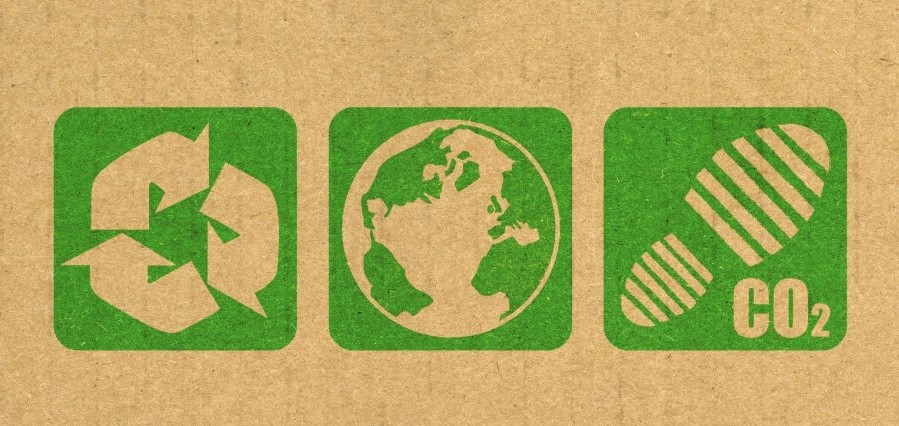Environmental impact has always been a crucial consideration for businesses around the world. And since COVID-19 forced businesses to shift their focus to quickly provide for essential goods, you should know that consumer demand patterns are constantly changing, bringing the attention back to sustainability. This has brought back businesses to focus on improving their impact on the environment.

We all know that consumers are smart. They’re aware of the social and environmental credentials of brands and consider that factor before making their buying decisions. It’s their rising expectation to reduce the carbon footprint that is driving them to make eco-friendly choices. And while we all agree that sustainability is a great demand decision, it’s time for businesses to meet these expectations.
Must Read: The Outlook of Supply Chain Post-Pandemic
How to Achieve Sustability?
Sustainability concerns are popular in all industries and companies are striving to address them efficiently while simultaneously improving internal systems. But a failure to embrace an extensive approach to the issue can cause companies to fall short in their efforts. Counting the most effective efforts to achieve sustainability, we’ve found that a holistic transformation of the supply chain is a successful strategy.
The fact is that eco-friendly practices affect not one but all areas of the business. Out of this, product development is just one, and the various stages of production offer supply-chain managers plenty of flexibility in incorporating sustainable methods.
Green Supply Chain Management
Sourcing, packaging, and transportation all have tangible effects on the environment, but they don’t always have to be adverse. The solution to these problems is green supply chain management, also abbreviated as GSCM. That’s because it can resolve several issues surrounding commercial manufacturing techniques by encompassing each level of the supply chain, right from product concept to distribution.
GSCM uses core strategies like closed-loop manufacturing, green material usage, reduction of fuel emissions, reverse logistics, JIT inventory management, ethical sourcing, efficient transportation, and green certification. So, let’s walk through the implementation of these core GSCM strategies to start making the most of them, as soon as possible.
Green Material Usage
A material’s energy is directly related to how much is needed to create it, from procurement to refinement. Green manufacturing lowers the embodied energy, thus minimizing its environmental impact. Similarly, you must also focus on using sustainable materials that limit resource depletion, lower acquisition costs, and minimize carbon emissions.
Ethical Sourcing
Ethical sourcing involves a focus on human, animal, and environmental wellness. It is common knowledge that sustainability centers on social, economic, and environmental health. So, for a material to be truly sustainable, suppliers must obtain it by respecting human harvesters and natural resources.
Just In Time Inventory Management
JIT in supply chain management is an effective inventory management technique that helps companies in placing materials in the right place at the right time. It helps to avoid overspending on materials and overfilling warehouses with a prime focus on the quality of your product. This strategy takes practice but can streamline production. A major component is the data analysis because managers must forecast consumer purchasing trends to meet demands.
Did you know? Zara also uses JIT for their inventory management.
Reverse Logistics
Reverse logistics addresses a company’s concern of how to handle products once they fulfill their purpose. Following GSCM results in encouraging recycling and reusing, though products can also undergo other disposal methods if recycling doesn’t seem possible. You might also refer to this strategy as a closed-loop system, which means materials go out and come back for repurposing.
Green Certification
Companies must look for certifications from the Indian Green Building Council, Bureau of Energy Efficiency, etc to show their commitment to sustainability. These certifications require meeting extensive criteria which ultimately help in building goodwill for companies.
Efficient Transportation
The fact is that transportation over long distances majorly contributes to greenhouse gas emissions by burning fossil fuels. But an effective way to change that is replacing fossil fuels with alternative fuels and more importantly establishing local supplier and manufacturer relationships. Improving modes of transportation can also pose several complexities as most modern means of transportation release emissions to some level or another. And although green alternatives aren’t always widespread or accessible, you can always find the most eco-friendly ways to transport your products.
Also Read: The Impact of Congestion on Supplychains
As much as these practices help you in achieving your goal, a more relevant point to note here is that you must always share the same goals with your partners. That’s because you wouldn’t want to have any mismatched efforts across your entire supply chain.
Conclusion: As businesses look to successfully rebuild, restructure, and emerge from the pandemic, leaders can’t overlook the role that sustainability will play in cost savings and reputation building. It can effectively decide the success or failure of a company’s future when the “New Normal” actually begins.
For more articles like ‘How to attain a greener supply chains in 2021’, follow us on Facebook, Twitter, and LinkedIn.